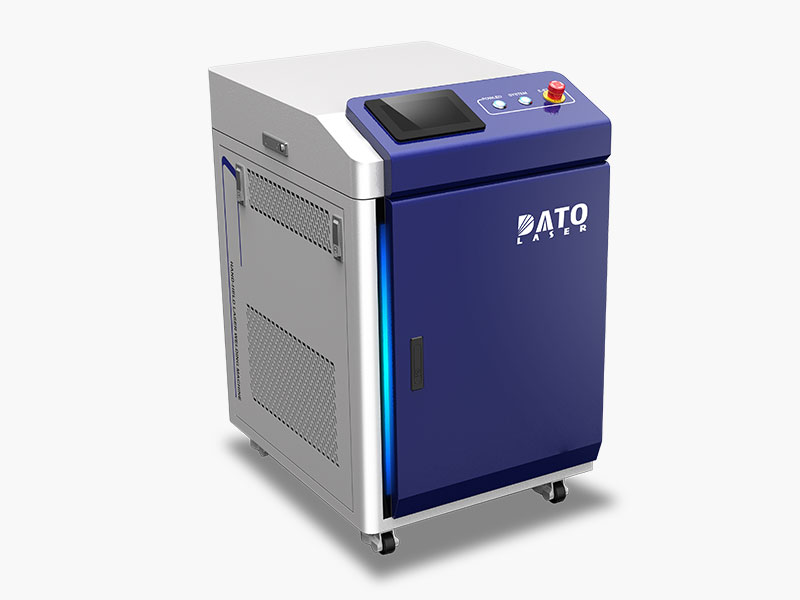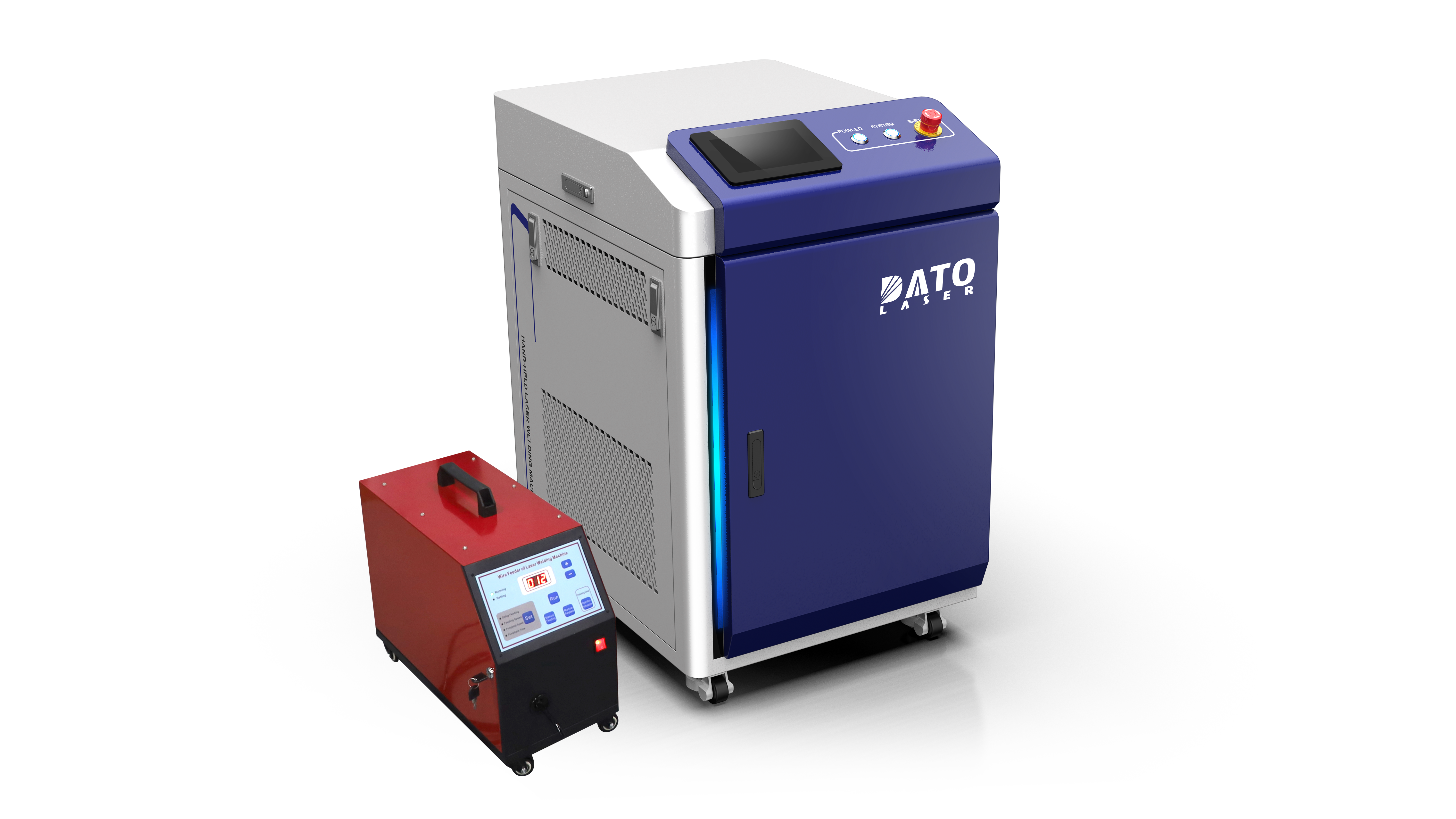Can Laser Cleaning Be Used for Delicate Surfaces?

Understanding Laser Cleaning Technology
Laser cleaning is a non-contact, environmentally friendly surface treatment method that uses laser beams to remove contaminants, coatings, rust, and other unwanted materials. Unlike abrasive or chemical cleaning methods, laser cleaning provides a controlled and precise way to clean surfaces without causing damage. This technology has gained popularity across various industries, from aerospace to automotive and heritage conservation.
When it comes to delicate surfaces, the primary concern is whether laser cleaning can provide effective results without compromising the integrity of the material. The answer is yes—laser cleaning can be safely used on delicate surfaces with the right parameters and techniques.
How Laser Cleaning Works on Delicate Surfaces
Laser cleaning machine operates on the principle of selective absorption. When a laser beam interacts with a surface, the contaminants absorb the energy, vaporizing or breaking away without affecting the underlying material. The key factors that determine the effectiveness and safety of laser cleaning for delicate surfaces include:
1. Wavelength and Power Control
The wavelength and power of the laser beam play a crucial role in determining the impact on the surface. For delicate surfaces such as historical artifacts, paintings, or thin metal sheets, low-power laser cleaning systems (such as nanosecond or femtosecond lasers) are used. These systems ensure minimal thermal effect, preventing surface damage.
2. Pulse Duration and Frequency
Short pulse durations help in controlling the energy exposure, making it possible to remove unwanted layers without heating or altering the delicate substrate. High-frequency pulsing distributes the energy evenly, reducing the chances of localized damage.
3. Beam Spot Size and Scanning Speed
A smaller beam spot size with a controlled scanning speed allows precise removal of contaminants. This is particularly useful in applications such as artwork restoration, electronic component cleaning, and medical equipment maintenance.
4. Material Sensitivity and Testing
Before applying laser cleaning on a large scale, small test areas are typically cleaned first to evaluate the response of the material. This ensures that the laser parameters are optimized for safe and effective cleaning.
Applications of Laser Cleaning on Delicate Surfaces
1. Historical and Artistic Restoration
One of the most significant applications of laser cleaning in delicate environments is the restoration of historical monuments, sculptures, and paintings. Traditional cleaning methods can be too abrasive, leading to irreversible damage. Laser cleaning allows for precise removal of dirt, oxidation, and biological growth without affecting the underlying structure or pigments.
2. Electronic Component Cleaning
Microchips, circuit boards, and other electronic components require high-precision cleaning without introducing mechanical stress. Laser cleaning effectively removes oxides, flux residues, and microscopic contaminants without harming the functionality of these sensitive parts.
3. Aerospace and Automotive Applications
Delicate aerospace and automotive components, including lightweight composite materials, benefit from laser cleaning’s precision. It ensures effective removal of coatings and contaminants without compromising structural integrity, which is crucial for maintaining performance and safety.
4. Medical Device Cleaning
Medical tools and implants require sterilization without chemical residues. Laser cleaning offers a highly effective method for disinfecting delicate surgical instruments and medical implants, ensuring they meet stringent hygiene standards without surface degradation.

Advantages of Using Laser Cleaning for Delicate Surfaces
1. Non-Abrasive and Damage-Free Cleaning
Unlike sandblasting or chemical treatments, laser cleaning does not wear down the surface or introduce harmful residues. This makes it ideal for fragile materials.
2. Environmentally Friendly and Safe
Laser cleaning eliminates the need for hazardous chemicals, reducing pollution and ensuring safety for both operators and the environment.
3. Highly Precise and Selective
Laser technology allows pinpoint accuracy, enabling selective removal of unwanted layers while preserving the base material.
4. Cost-Effective and Low Maintenance
With minimal consumables and reduced labor costs, laser cleaning provides a long-term cost advantage over traditional methods.
Choosing the Right Laser Cleaning System
When selecting a laser cleaning machine for delicate surfaces, factors such as laser type, power output, and control precision should be carefully considered. Fiber laser cleaning systems, for instance, are highly effective for industrial applications, while lower-power pulsed lasers are better suited for artistic and heritage conservation projects.
DATO and Leapion: Leaders in Laser Cleaning Solutions
DATO and Leapion offer cutting-edge laser cleaning machines tailored to various industries, ensuring the highest precision and safety standards. Our fiber laser cleaning solutions are designed to handle delicate surfaces with maximum efficiency and reliability.

Conclusion
Laser cleaning is a revolutionary technology that provides an effective, non-contact, and environmentally friendly method for cleaning delicate surfaces. By carefully adjusting laser parameters, this technology can safely remove contaminants without damaging fragile materials. Whether used for historical restoration, medical device cleaning, or aerospace applications, laser cleaning is the ideal choice for industries that require precision and reliability.
For more information on advanced laser cleaning solutions, explore DATO and Leapion’s range of high-quality laser cleaning machines designed for delicate and industrial applications alike.
Related Blogs
-
 Exploring the Safety, Precision, and Industrial Benefits of Laser Surface CleaningIn today’s fast-paced industrial world, where quality, efficiency, and sustainability are top priorities, manufacturers are constantly seeking better ways to clean metal surfaces without compromising material integrityBlog
Exploring the Safety, Precision, and Industrial Benefits of Laser Surface CleaningIn today’s fast-paced industrial world, where quality, efficiency, and sustainability are top priorities, manufacturers are constantly seeking better ways to clean metal surfaces without compromising material integrityBlog -
 A Complete Guide by DATO and LeapionIn modern industry, surface preparation and maintenance play a crucial role in achieving high-quality manufacturing results. Laser cleaning machines have emerged as one of the most innovative, efficient, and environmentally friendly tools for removing contaminantsBlog
A Complete Guide by DATO and LeapionIn modern industry, surface preparation and maintenance play a crucial role in achieving high-quality manufacturing results. Laser cleaning machines have emerged as one of the most innovative, efficient, and environmentally friendly tools for removing contaminantsBlog -
 Laser cleaning machines are revolutionizing industrial surface cleaning by offering a faster, safer, and more eco-friendly alternative to traditional methods. Whether removing rust, paint, oil, oxide, or other surface contaminants, laser cleaning has become a cutting-edge solution in manufacturing,Blog
Laser cleaning machines are revolutionizing industrial surface cleaning by offering a faster, safer, and more eco-friendly alternative to traditional methods. Whether removing rust, paint, oil, oxide, or other surface contaminants, laser cleaning has become a cutting-edge solution in manufacturing,Blog -
 Introduction: Transforming EV Battery Manufacturing Through Laser TechnologyThe electric vehicle revolution has accelerated dramatically over the past decade, bringing with it unprecedented challenges and opportunities in battery manufacturing. As global automakers commit billions to electrificationBlog
Introduction: Transforming EV Battery Manufacturing Through Laser TechnologyThe electric vehicle revolution has accelerated dramatically over the past decade, bringing with it unprecedented challenges and opportunities in battery manufacturing. As global automakers commit billions to electrificationBlog












